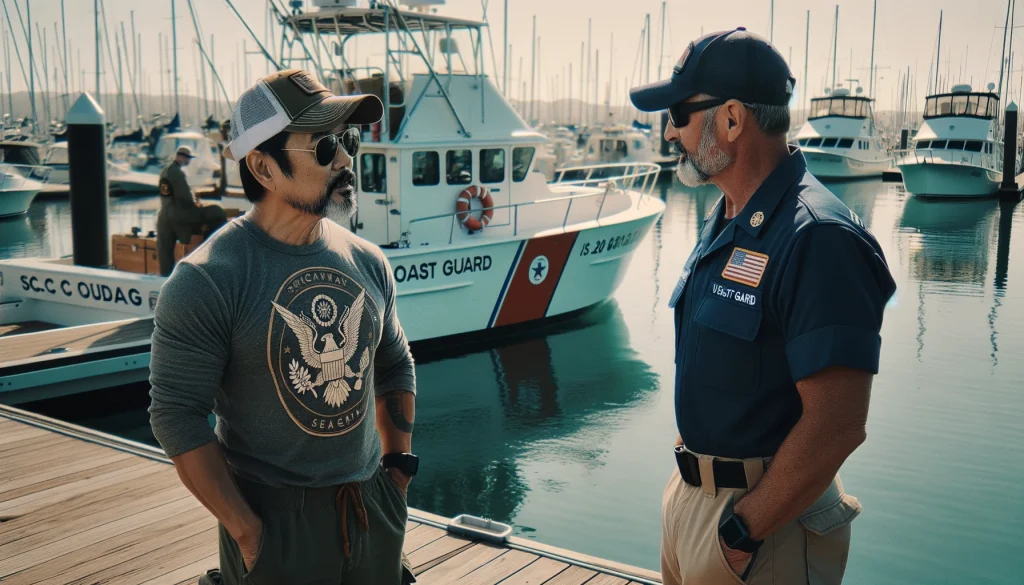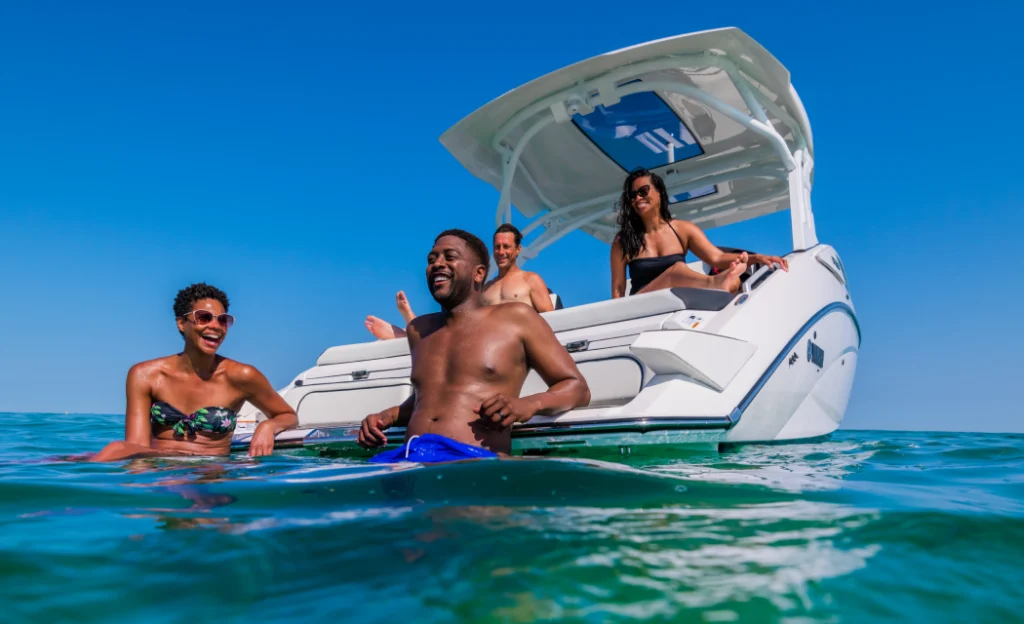A Float Plan Should Contain What Information: Key Elements for Boating Safety
A float plan is an essential aspect of a safe boating experience, detailing important information about a boat excursion and offering crucial details for search and rescue efforts in case of an emergency. A comprehensive float plan will typically include information about the boat, passengers, intended route, safety equipment onboard, and estimated arrival time. By creating and sharing a float plan, boaters can ensure their safety on the water and provide a valuable tool for authorities in the event of an unexpected issue.

One of the core components of a float plan is the identification of the boat and its passengers. This often includes the names, contact information, and a brief description of everyone on board. Additionally, details about the boat itself, such as size, color, and registration numbers, are necessary. As part of a float plan, boaters should outline their intended route, destination, and estimated arrival time. Sharing this information with a designated contact, such as a marina or a family member, ensures that help will be readily available should the need arise.
Key Takeaways
- A float plan covers important information about the boat, passengers, intended route and expected arrival time.
- Inclusion of safety equipment details and boat identification are crucial components of a comprehensive float plan.
- Sharing the float plan with a designated contact helps ensure timely assistance in case of emergencies.

Core Information of a Float Plan
Vessel Specifics
When creating a float plan, it is essential to include the necessary details about your vessel. These specifics allow authorities and search parties to identify and locate your boat if needed. Make sure to mention the following information about your vessel in your float plan:
- Boat name
- Type of boat (e.g., sailboat, motorboat, kayak)
- Boat brand
- Size of the boat
- Color of the boat
- Boat identification number (e.g., USCG documentation number or state registration/license plate number)
For example, a float plan may describe the vessel as:
Vessel Starlight, a white 40-foot Beneteau sailboat with a blue stripe, a navy blue Bimini, and oars for auxiliary propulsion. The vessel identification number is USCG XXXXXXX.

Journey Details
In addition to vessel specifics, a comprehensive float plan should provide information about the journey itself. Including itinerary, departure date, expected return time, and headings will help authorities track your route and assist with any potential search and rescue efforts. The float plan should cover:
- Departure date and time
- Expected return date and time
- Latitude and longitude of departure and destination points
- General route to be taken, including interim waypoints
- Projected headings & speeds (if applicable)
- Number of persons onboard
- Emergency contact information
A well-detailed journey summary may look like:
Leaving from Latitude 25.78944, Longitude -80.13571 on October 20, 2023, 10:00 AM, Starlight will head north to reach Latitude 28.53945, Longitude -80.61051 by October 22, 2023, 6:00 PM. Journey includes stops at Lat 26.90874, Lon -80.07173 (Palm Beach) and Lat 27.66482, Lon -80.36586 (Vero Beach), and will maintain an average speed of 6 knots. The crew consists of 4 persons, and emergency contact is Jane Doe at (555) 123-4567.
By including the proper vessel specifics and journey details in your float plan, you can ensure a safer and more enjoyable boating experience while giving those on land peace of mind during your voyage.

In Case of Emergencies
Emergency Contacts
It is crucial to include emergency contact information in a float plan. This should consist of the U.S. Coast Guard contact number and the names and contact details of at least two trusted individuals who are not on the vessel. These contacts can be friends, family members, or park rangers. Including contact information ensures that, if needed, they can quickly alert the appropriate emergency services or Search and Rescue (SAR) teams, facilitating a faster and more efficient response.
Procedures
In addition to emergency contacts, it is essential to outline specific procedures to follow in case of emergencies. One crucial aspect involves the vessel's information, which should be incorporated into the float plan. This includes details such as the size, color, make, and type of boat. Including information about safety equipment, engine size, and vessel identification number is also important, as it will serve as a guide for search and rescue teams in case of an incident.
The float plan should also include details on the number of passengers onboard, the projected route, or final destination. This information is relevant in assessing the situation and can help SAR teams prioritize their efforts based on the circumstances, such as the likelihood of weather changes or potential dangers in specific areas.
Regularly updating the emergency contacts about changes in the float plan, such as weather conditions, potential damage to the vessel, or any other incidents that may compromise the safety of the crew, is critical. This helps maintain constant communication and ensures that emergency services have accurate information if the need arises.
In conclusion, a well-prepared float plan is essential for ensuring the safety of boaters and facilitating efficient emergency response when needed. Include relevant contact information, procedures, and mandatory vessel details to guarantee the effectiveness of the float plan during emergencies.

Safety Measures
Boat Safety Guidelines
When planning a trip on the water, it is important to follow boat safety guidelines to ensure a safe and enjoyable experience. Before setting sail, always check the weather conditions and inform someone on land about your float plan. This plan should contain vital information such as the boat's identification number, boat name, type, and color. Additionally, sharing your planned departure and arrival times, along with details about your route, helps others keep track of your whereabouts in case of emergencies.
As part of boat safety efforts, ensure all passengers wear USCG-approved life jackets. These jackets increase the chances of survival in the event of accidents or when one falls overboard. Moreover, guaranteeing that the boat is in good condition and not exceeding its capacity further contribute to a secure voyage.
Safety Equipment
A well-equipped boat should contain essential safety equipment, tailored to the vessel's size and the nature of the trip. A required item on federally controlled waters for boats less than 39.4 feet (12 meters) is a whistle. This signaling device serves as an auditory warning and can help alert other boaters or rescue crews in case of distress.
A VHF radio is another imperative tool for boat safety, aiding communication with fellow boaters and rescuers during emergencies. It is also wise to carry a first-aid kit on board, ensuring that minor injuries can be handled promptly. Depending on the type of boat and the duration of the trip, other crucial safety equipment to consider may include flares, fire extinguishers, and navigation lights.
In conclusion, prioritizing safety measures while boating through adherence to guidelines, wearing life jackets, and equipping the vessel with proper safety equipment can lead to a secure and enjoyable experience on the water.

Additional Details to Include
Activities and Equipment
When preparing a float plan, it is important to provide information about the activities you will be participating in and the equipment you will be using. This can include details about fishing gear, navigation tools, communications devices, and safety equipment like life jackets and flares. Be sure to mention the make and model of your boat as well as any distinguishing features, such as color and size.
Considering the weather can also play a crucial role in trip planning. Monitor the weather forecast and include this information in your float plan. It will allow people to have an understanding of the conditions you may be facing during your trip.
Other Useful Resources
In addition to the basic information in a float plan, it can be helpful to provide a list of resources that may be useful in case of an emergency or to answer any questions that may arise. Some examples of useful resources are:
- Navigation resources: Charts and maps of the area, as well as tide and current data, can be crucial to understanding the local conditions and ensuring safe travels.
- Check-in points: Establish a series of check-in points and times to communicate your progress throughout the trip. This can make it easier for people to track your location and ensure help can be dispatched faster if needed.
- Insurance information: Including your boat insurance policy details can help expedite the claims process if there is any damage to your boat during the trip.
- Emergency contact information: Provide a list of emergency contact numbers, including local authorities, marina or launch ramp contacts, and personal emergency contacts.
- Flashcards and forms: In the event of a situation where someone needs to reference essential information quickly, having easy-to-read flashcards or forms summarizing key information can be beneficial.
Remember to keep the information in your float plan clear and concise to ensure it is easily understood by others. Always stay up-to-date with any changes in plans or conditions, updating your float plan as necessary.

Frequently Asked Questions
What are the essential components of a float plan?
A float plan should contain crucial information such as your vessel's description, the number of passengers onboard, your projected route or final destination, updated contact information, and a detailed itinerary of your planned outing, including departure and return times ^1^.
How does a float plan enhance boating safety?
A float plan enhances boating safety by providing a clear document of your intended trip, including the route, vessel, and people involved. This information helps search and rescue personnel to locate and assist more effectively if an emergency arises ^2^.
Who should you share your float plan with?
You should share your float plan with family members, friends, and local marina or harbormaster who are not part of the boating trip. By providing this information, they will be able to initiate a search and rescue process when necessary ^3^.
When should you update or change your float plan?
You should update or change your float plan whenever there are significant changes to your planned route, destination, duration, or passenger manifest. Any updated information is essential for search and rescue personnel to locate and assist you during emergencies ^4^.
How detailed should a float plan be?
The level of detail in a float plan depends on the nature of your trip. However, including specific information about the vessel, route, passengers, and schedule can significantly help emergency responders locate and assist if needed. The more specific the plan, the better ^5^.
What should you do after completing your boating trip in regards to the float plan?
Upon completing your boating trip, it is essential to inform the people who have your float plan that you have safely returned. This step ensures that no unnecessary search and rescue efforts are initiated due to a lack of communication about your trip completion ^6^.
Charlie is Editor-in-Chief of Sea Magazine